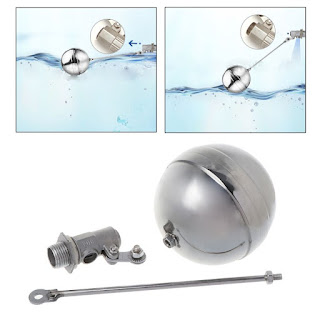Understanding Water Tank Ball Float Valves: How They Work and Their Benefits
Understanding Water Tank Ball Float Valves: How They Work and Their Benefits
A water tank ball float valve is a crucial component in many water systems. Learn what it is and how it works to ensure your system operates efficiently and effectively.
Water tank ball float valves are essential components of many water systems, from residential to commercial and industrial applications. They play a crucial role in regulating water levels in tanks and preventing overflows or shortages. In this article, we will explore what water tank ball float valves are, how they work, and their benefits.
So, let's dive in and learn more about this important component of water systems.
What is a Water Tank Ball Float Valve?
A water tank ball float valve is a type of valve that regulates the water level in a tank. It comprises a ball that floats on the surface of the water, connected to a lever arm that operates a valve mechanism. As the water level in the tank rises, the ball also rises, and the lever arm activates the valve to close the water inlet. When the water level falls, the ball also falls, and the valve opens to allow water to enter the tank again.
Water tank ball float valves come in different sizes, materials, and designs, depending on the application and the size of the tank. They are commonly made of plastic or brass, and their sizes range from half an inch to several inches.
How Does a Water Tank Ball Float Valve Work?
A water tank ball float valve works based on the principle of buoyancy. The ball floats on the surface of the water, and its weight is balanced by the water's buoyant force. As the water level in the tank rises, the buoyancy force also increases, causing the ball to rise. This movement of the ball is transferred to a lever arm that operates a valve mechanism.
When the ball reaches a certain height, it activates the lever arm, which in turn closes the valve, stopping the water flow into the tank. This prevents the tank from overflowing and helps maintain a consistent water level. As the water level in the tank falls, the ball also falls, causing the lever arm to release the valve and allow water to enter the tank again.
Benefits of Water Tank Ball Float Valves
Water tank ball float valves offer several benefits, making them an essential component of many water systems. Here are some of the benefits of using water tank ball float valves:
- Prevents overflow: Water tank ball float valves prevent water tanks from overflowing, which can cause damage to the tank and surrounding areas.
- Prevents shortage: By regulating the water level, water tank ball float valves prevent the tank from running dry, ensuring a constant supply of water.
- Low maintenance: Water tank ball float valves are easy to maintain and require minimal maintenance. They have few moving parts, reducing the chances of breakdowns or malfunctions.
- Cost-effective: Water tank ball float valves are relatively inexpensive, making them a cost-effective solution for regulating water levels.
- Energy-efficient: By preventing overflows and shortages, water tank ball float valves help conserve water and reduce energy costs.
FAQs
Q: Can water tank ball float valves be used in any type of tank?
A: Water tank ball float valves can be used in various types of tanks, including plastic, steel, and concrete tanks. The valve's size and design should be selected based on the tank's size and the water flow rate.
Q: How often should water tank ball float valves be inspected?
A: Water tank ball float valves should be inspected regularly, at least once a year, to ensure they are functioning correctly.





Comments
Post a Comment